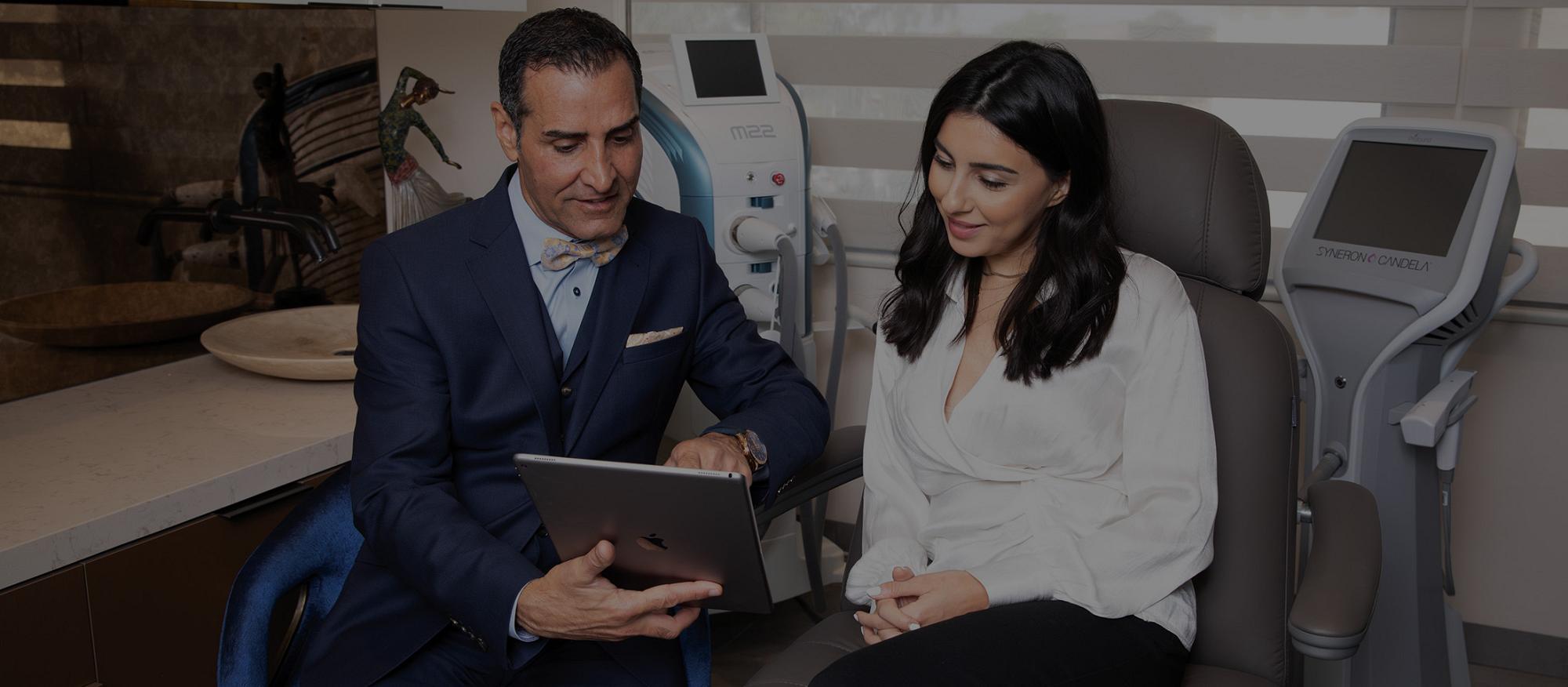























This post goes over the evolution of facelifting from Traditional Deep Plane Facelifts to Preservation Deep Plane Facelifts, a game changer in facial surgery. It covers the history of these techniques, the main differences between them and how preserving underlying facial structures provides a more natural and longer lasting result.
The evolution of facelift surgery has been incredible. From its humble beginnings in the early 20th century to today, it's been a journey. With a quiet start and privacy, cosmetic surgery slowly emerged thanks to pioneers like Eugen Hollander who performed the first facelift in 1901. The exact history of the facelift is unknown as these procedures were initially kept secret. It wasn't until after World War I that attitudes changed and reconstructive needs and advances in anesthesia showed what was possible with different facelift techniques.
In the last two decades, there's been a huge shift in how we do this type of surgery. Modern technology allows us to go beyond just tightening the skin. We're going deeper into the layers to get more natural results that last longer. At the top of the list is the Deep Plane Facelift technique, a method that goes beyond what traditional SMAS lift can do which only addresses the superficial layers.
The Deep Plane Facelift began when facial rejuvenation was more of an art than a science. The landscape of cosmetic surgery changed dramatically with the introduction of customized facelifting in the 1990s. These new techniques were not just to minimize scarring but to restore lost volume in the face - a new era of aesthetic surgery. It was in this revolutionary environment that evolution gave birth to what we now call the "deep plane" method. It wasn't just about surface enhancement but about total facial rejuvenation - going deeper into the layers beneath the skin to address both surface and underlying structures.
The evolution of the Deep Plane Facelift technique is a testament to our dedication to excellence in facial plastic surgery. Introduced by Dr. Hamra in the 1990s, his extended deep plane method allows us to:
This has been a game changer in facial plastic surgery and is highly requested by those looking for long term and wide ranging facial rejuvenation. Many believe that these procedures can reverse aging - a big promise for those who want to turn back the clock.
Recognizing the importance of addressing the support structure of the face due to natural aging process, surgeons developed techniques that focus on skin refurbishment and adjusting the underlying layers. This shift bypassed the old facelifting results - unnatural tightness or overstretching. These advancements paved the way for what would become the modern deep plane techniques that changed the paradigm in cosmetic surgery for preserving youthfulness through surgery.
The preservation Deep Plane Facelift is an artful blend of technique and creativity to enhance facial rejuvenation surgery. This innovative approach was designed to overcome the limitations of traditional facelift by addressing both the deeper muscle layer and the superficial musculoaponeurotic system (SMAS). It lifts and repositions these underlying structures while preserving the surrounding soft tissues.
Using this deep plane technique ensures that patients get natural looking results with long term correction - because of the internal restructuring during surgery. The benefits of choosing a Preservation Deep Plane Facelift are less downtime after surgery, fewer complications, more natural looking and longer lasting results.
Unlike traditional techniques that only address surface level changes, this advanced technique works differently in the facial structural layers for better patient satisfaction.
The Preservation Deep Plane Facelift improves on the traditional method by not only reducing fascia tension but also combining high lateral SMAS and deep plane techniques to minimize skin elevation and tension. Both methods go into multiple layers of the face but what sets the preservation deep plane apart is its focus on preserving natural facial anatomy which means less bruising, swelling and discomfort after surgery.
The preservation deep plane facelift has its own advantages.
With these advanced techniques, facelifting has moved beyond the old ways of doing things and we can now get results that look naturally rejuvenated not artificially altered - a big change in how we address aging through cosmetic surgery.
Facelifting has moved beyond the old ways of doing things and we can now get results that look naturally rejuvenated not artificially altered - a big change in how we address aging through cosmetic surgery.
The Preservation Deep Plane Facelift or preservation facelift has multiple advantages over the earlier generations of facial rejuvenation techniques. This procedure gives a revitalized look without the over stretched look of traditional lifts. By preserving the natural fat compartments and supporting the malar fat pad it achieves long lasting results that means full facial rejuvenation.
Reducing trauma to the tissues gives several benefits.
The Preservation Deep Plane Facelift is a technique that requires an in-depth understanding of facial anatomy. It involves the meticulous separation and release of facial retaining ligaments to lift and reposition the drooping soft tissues of the face. This technique involves sub-SMAS dissection which targets these ligaments from the neck to the midface.
In this Deep Plane Facelift, focusing on key areas such as the malar fat pad - a fat compartment in the face - is crucial to preserve volumetric harmony and get a natural and rejuvenated result. By considering volume distribution and dynamic expressions, preservation deep plane techniques can produce results that not only meet aesthetic standards but also unique to each patient.
With over 20 years of experience, Dr. Kevin Sadati is a renowned expert in facial plastic surgery where he has developed and refined the Preservation Deep Plane Facelift techniques. He has been voted Orange County's best facial cosmetic surgeon for 6 years in a row - a testament to his expertise and innovation in this field.
Beyond his surgical skills, Dr. Sadati is also a scholar and instructor in facial rejuvenation. He speaks at national symposia and writes for peer reviewed journals, impacting his colleagues and elevating patient care with the latest procedures for optimal results in facial rejuvenation.
Patients who have had the Preservation Deep Plane Facelift share their results. Before and after photos show a significant change in facial shape and skin tightness, patients love that they still have natural expression without looking overdone or stretched.
The happy patients highlight several benefits of the Preservation Deep Plane Facelift that makes it effective.
When considering who is a good candidate for the Preservation Deep Plane Facelift, several factors must be taken into account. Patients should apply. They should be within the 50 to 70 age range, in good health and have moderate to severe signs of facial aging - sagging skin around the cheek and jaw area. No underlying medical conditions that can impede recovery is part of the thorough evaluation. And patient's attitude and realistic expectations are equally important.
Those who have deep nasolabial folds and sagging in the neck may benefit from this precise technique. The preservation deep plane targets these signs of aging.
Recovery from Preservation Deep Plane Facelift takes time and self care. The full recovery period is usually several weeks, during which patients may experience mild bruising, discomfort and swelling that last about 2 weeks. Most patients can go back to their daily activities in 2 weeks. The speed of recovery and job demands may vary this timeframe.
To aid in healing, patients should wear a compression garment on the treated area and not do any strenuous activity for at least 6 weeks post op. Thanks to twilight sedation instead of general anesthesia and less use of surgical drains, patients who have the Preservation Deep Plane Facelift have an easier and more comfortable recovery.
From the secret to the Preservation Deep Plane Facelift, facial rejuvenation has been a journey of amazing transformation. With the latest technology, patients can now have long lasting, natural looking results with minimal down time. Dr. Kevin Sadati's work and the technique's respect for facial anatomy has set a new standard in cosmetic surgery. For those who want to turn back the clock with subtlety and style, the Preservation Deep Plane Facelift is the proof of modern medicine.
Unlike traditional facelifts that only tightens the skin, the Preservation Deep Plane Facelift preserves the natural facial structures. This gives a more natural look and faster healing. It's an alternative to general anesthesia with the option to use twilight sedation during the procedure.
By addressing the underlying facial structures including the Superficial Musculoaponeurotic System which is the major contributor to aging, the Preservation Deep Plane Facelift gives long lasting results. This approach preserves the natural fat compartments so the rejuvenated look will last longer.
The Preservation Deep Plane Facelift is best for patients 50 to 70 years old with moderate to severe signs of aging. Other factors like overall health and specific aging concerns also come into play.
During the recovery period after the Preservation Deep Plane Facelift, you can expect bruising, swelling and some discomfort for at least 3 weeks. To aid in healing, wearing a compression garment and not doing any strenuous activity is recommended. Although individual recovery time may vary, most patients can go back to work in 2 weeks after the deep plane procedure.
Dr. Sadati is an esteemed facial plastic surgeon with 20+ years of experience, He is recognized for his innovative advancements in the Preservation Deep Plane Facelift technique and is regarded as a foremost authority in this area of facial plastic surgery.

359 San Miguel Dr, Suite 200, Newport Beach, CA 92660
Clients from around the globe travel to see Dr. Sadati for his surgical expertise. He and his surgical team provide the highest standard of patient care, from the initial consultation, to complete recovery and conclusion of your care. Our friendly staff is available to accommodate you in any way that we can.
What procedure are you interested in?
359 San Miguel Dr, Suite 200, Newport Beach, CA 92660
What procedure are you interested in?